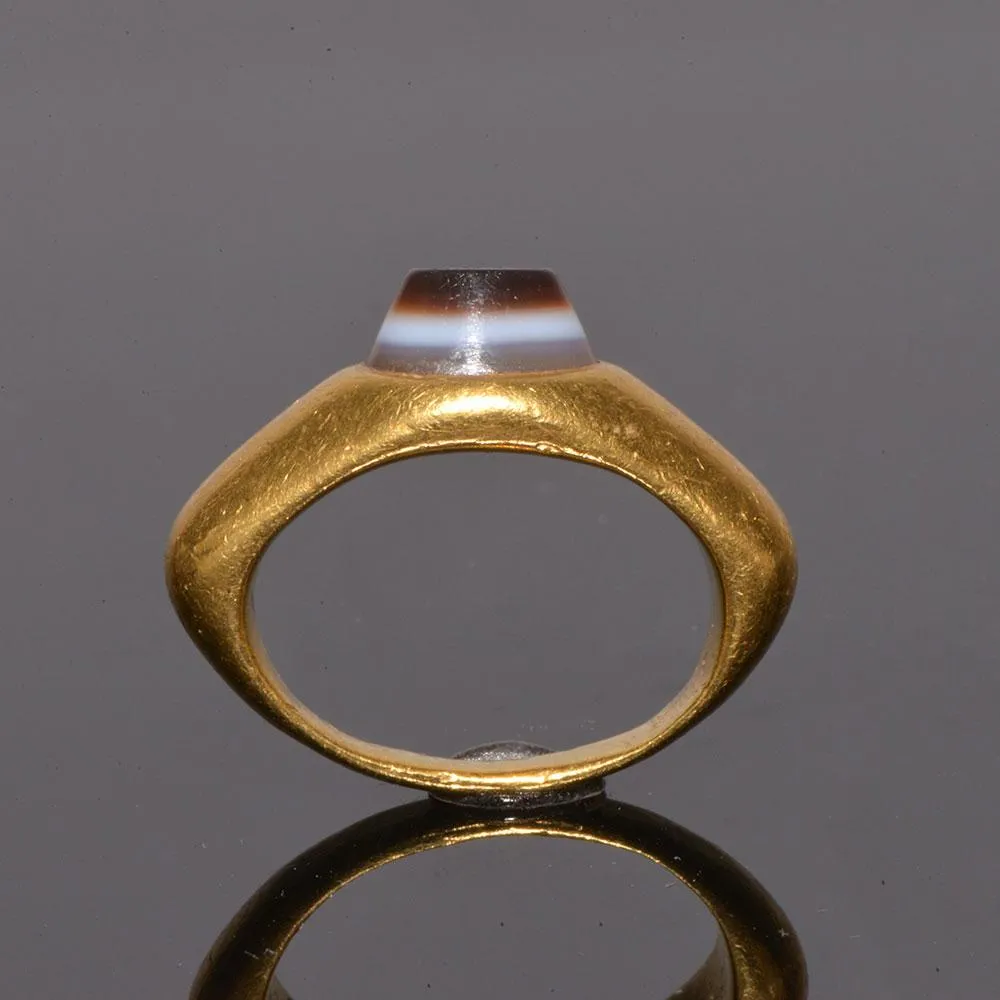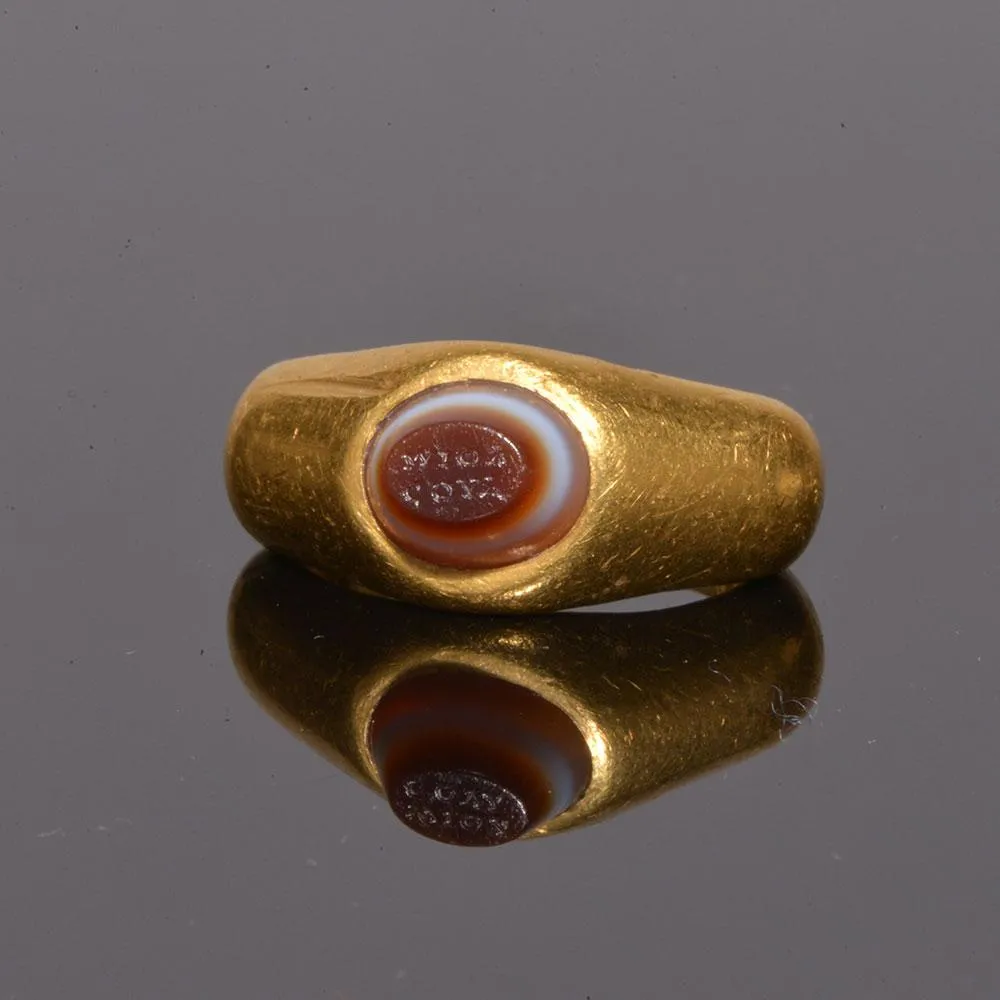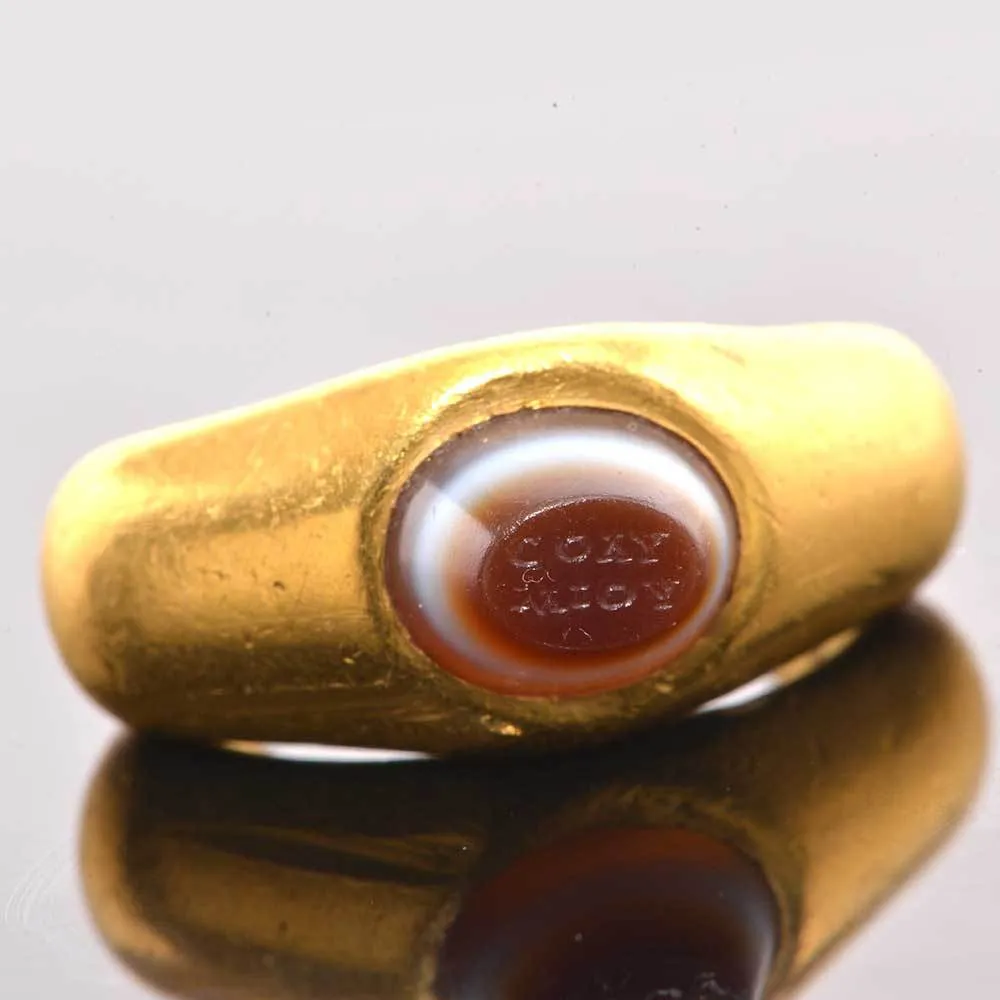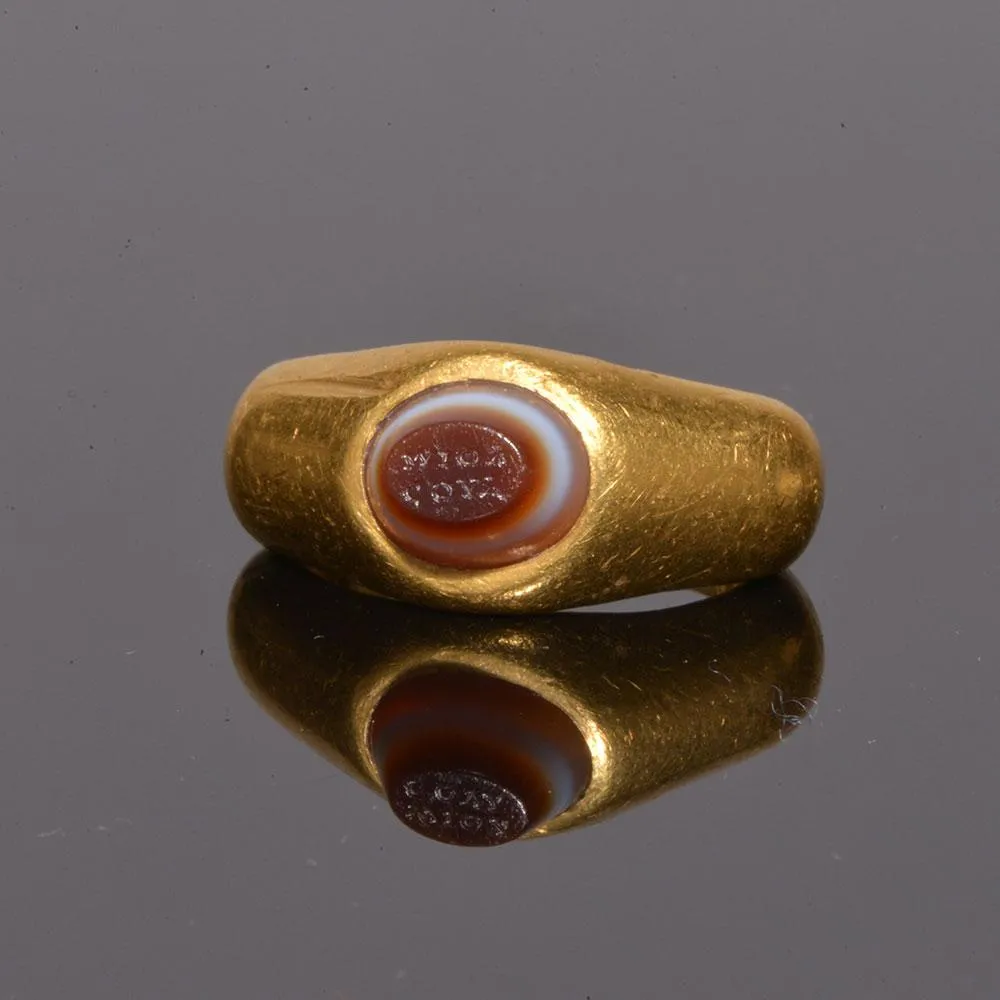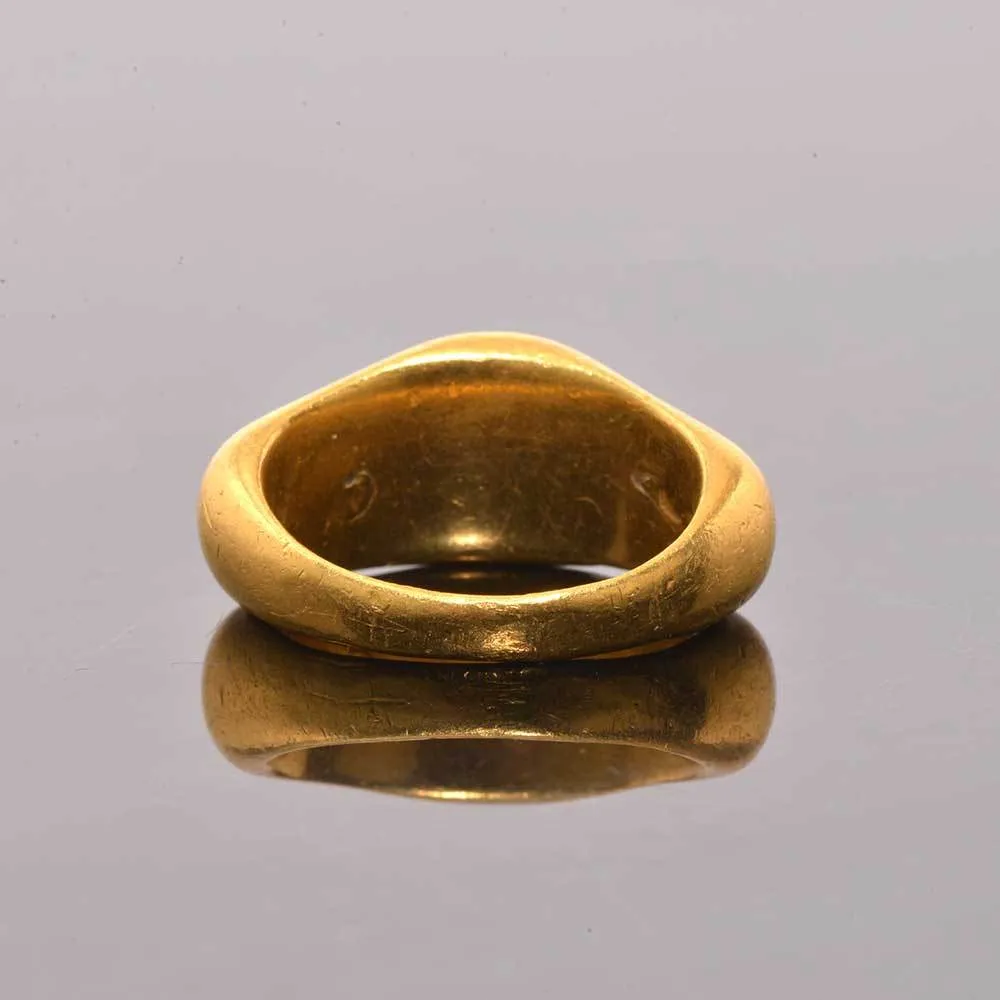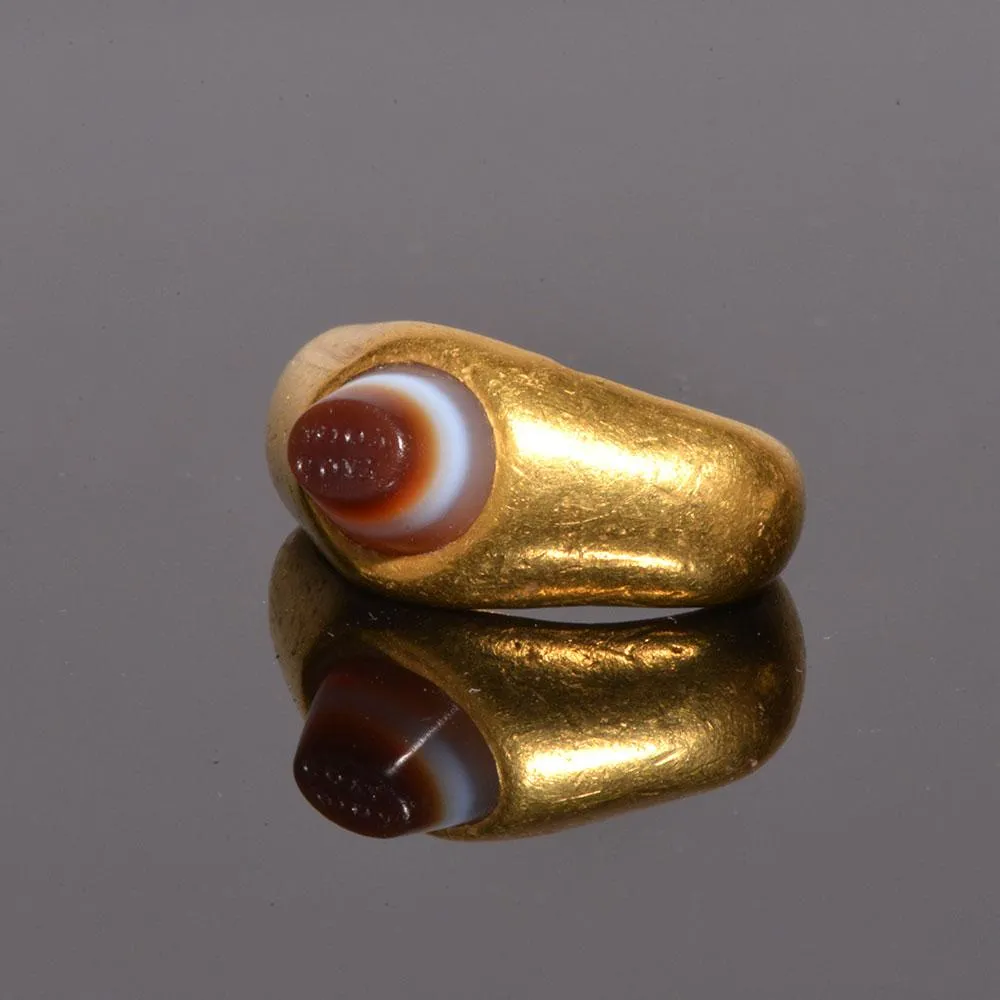This fine signet ring features a solid hoop of high carat gold, with angled bevelled shoulders and a round, high bezel that is off-set by a flat groove. The bezel is set with an outstanding oval eye agate in the form of a cone. This unusual shape displays three strata of color layers within the gem – blue/grey at the bottom, white in the middle, and the frequently used red at the top. On the tiny top surface is skillfully engraved two lines with a pithy inscription that reads: COAV/MIOV (fittingly mine?) in reverse.
Background: The Signet, or Seal Ring, was significant in Roman society, as it was used in validating serious legal documents by its owner. Intaglios, and engraved or intaglio-cut gems could serve as seals, even while appearing decorative. Cicero mentions them, and Pliny cites that the fashion of wearing signet rings eventually shifted to the little finger although statues show that Roman men often wore rings on the fourth finger of their left hand, which, in time, came to be known as the 'goldfinger'. A signet ring was highly representative of the individual who wore it. It was, in effect, their signature.
During the first two centuries AD, rings operate within a complex nexus of ideas of power, image, status and gender. According to Pliny, the first ever ring (anulus) and jewel (gemma) were forged from a fragment of the Caucasus into an iron bezel and worn by Prometheus (37.2), the Titan god of forethought and creator or mankind. Pliny explains the chronology of Roman ring-wearing began in the Republic, with the earliest made of iron, the gold ring being specially reserved for certain classes of persons or for certain special occasions. Thus envoys sent on missions of state wore gold rings when engaged on that particular service, but resumed their iron rings upon their return home. From the time of Augustus, gold rings were used to signify public status and recognition, especially for the equites, who became a third order between the Senate and the Plebs (33.29).
Bibliography: Hawley, R. (2007). Lords of the Rings: ring-wearing, status and identity in the page of Pliny the Elder. Bulletin of the Institute of Classical Studies. Supplement, (100), 103-111.
A. N. Sherwin-White (ed.), The Letters of Pliny (Oxford 1966)
Condition: hairline crack to the agate that does not detract, otherwise both ring and agate are intact and in excellent condition overall.
Dimensions: US ring size 3 1/2
Exhibited: Allen Memorial Art Museum, Oberlin College, Ohio (1961) no. 117
Provenance: Melvin Gutman Jewelry Collection, sold at Parke-Bernet Galleries, NYC, December 5th, 1969, lot 30, accompanied by copy of relevant auction page, thereafter private collection of pioneering graphic designer, artist and archivist, Elaine Lustig Cohen (1927–2016), acquired at the auction. Cohen is recognized for her body of design work integrating European avant-garde and modernist influences into a distinctly American, mid-century manner of communication. She is a living link between design’s modernist past and its continually changing present.




